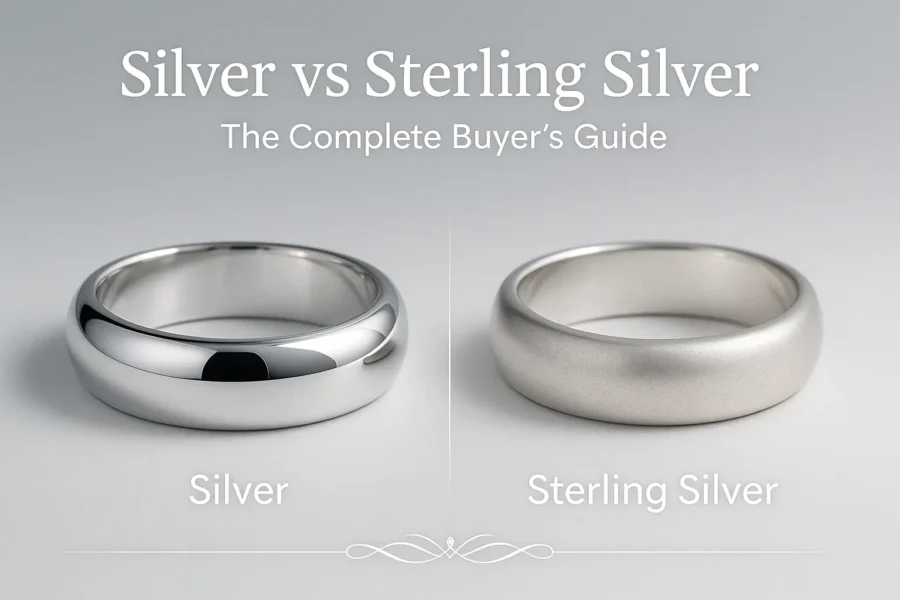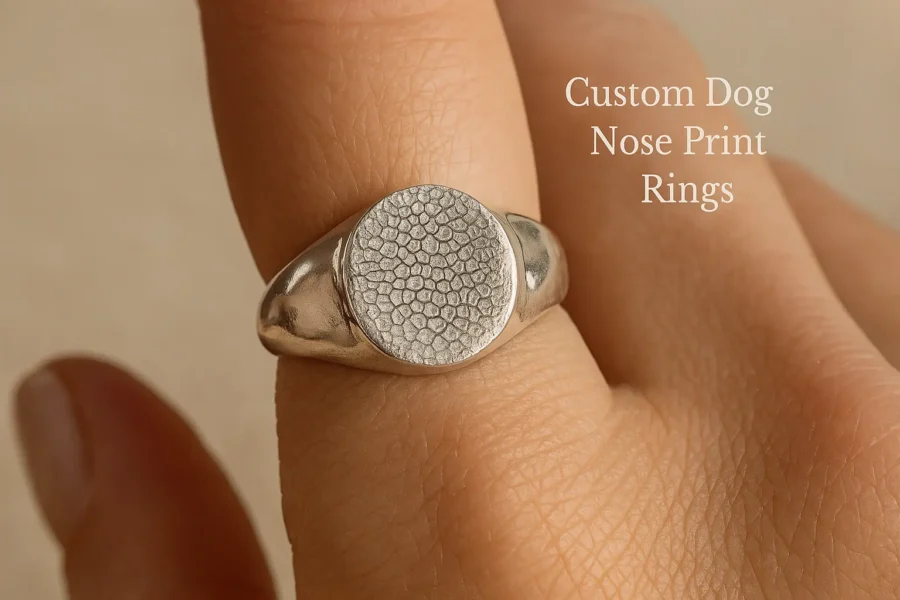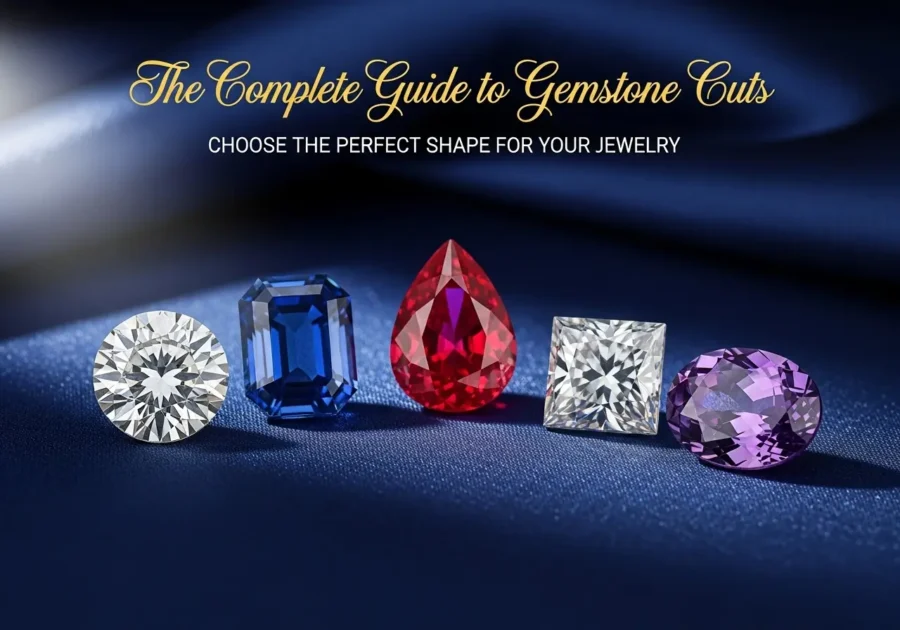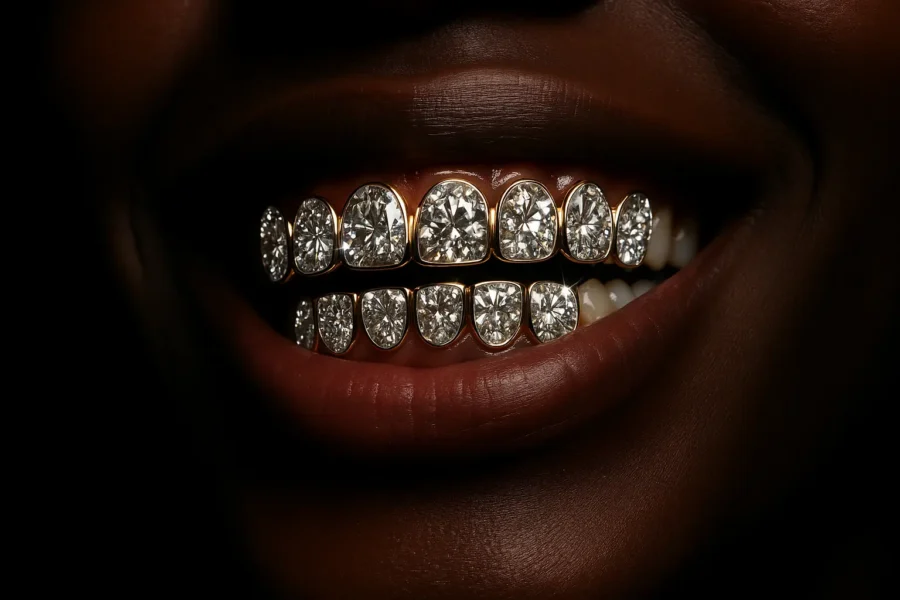When searching for the perfect diamond alternative, two gemstones consistently rise to the top: cubic zirconia and moissanite. Both offer stunning brilliance at a fraction of diamond prices, but they serve very different purposes in the jewelry world. After working with both materials for over 15 years in jewelry manufacturing, I’ve seen firsthand how the right choice depends entirely on your specific needs, budget, and lifestyle.
This comprehensive guide will help you understand the key differences between these popular diamond simulants, so you can make an informed decision that you’ll be happy with for years to come.
What is Moissanite?
Moissanite has a fascinating origin story that begins in outer space. In 1893, Nobel Prize-winning chemist Henri Moissan discovered tiny crystals in a meteorite crater in Arizona. What he initially thought were diamonds turned out to be silicon carbide – a completely different mineral with remarkable properties.
Natural moissanite is incredibly rare on Earth, so today’s jewelry market relies on lab-created versions that perfectly replicate the stone’s unique characteristics. The manufacturing process involves growing silicon carbide crystals under controlled conditions, resulting in gemstones that are optically and chemically identical to their natural counterparts.
What makes moissanite special is its impressive hardness rating of 9.25 on the Mohs scale. This puts it just below diamonds (10) but above emeralds, rubies, and sapphires, making it exceptionally durable for everyday wear. The gemstone also exhibits remarkable fire and brilliance, often appearing more sparkly than diamonds themselves.
What is Cubic Zirconia?
Cubic zirconia, commonly abbreviated as CZ, takes a different approach to diamond mimicry. Discovered in 1892 but not commercially viable until the 1970s, CZ is composed of zirconium dioxide and created entirely in laboratory settings.
The manufacturing process involves heating zirconium and zirconium dioxide to extremely high temperatures, then cooling the mixture slowly to form crystals. This process allows for precise control over color, clarity, and size, making CZ remarkably consistent and affordable to produce.
With a hardness rating of 8.5 on the Mohs scale, cubic zirconia is reasonably durable but softer than moissanite. It’s designed to be completely colorless and flawless, mimicking the appearance of perfect diamonds at accessible price points.
The Key Differences: Durability and Hardness
The hardness difference between moissanite (9.25) and cubic zirconia (8.5) might seem small, but it translates to significant real-world implications for jewelry longevity.
Moissanite’s superior hardness means it resists scratching and maintains its polish over time, even with daily wear. This makes it an excellent choice for engagement rings and other pieces that see constant use. The stone can withstand the bumps and contacts of everyday life while retaining its original luster.
Cubic zirconia, while still reasonably durable, is more susceptible to surface scratches and may show wear over time, particularly on the facet edges where light enters the stone. However, given its affordability, many people find it easy to replace CZ stones when needed, making this a practical rather than problematic consideration.

Brilliance and Fire: The Sparkle Factor
Here’s where the differences become immediately visible to the naked eye. Moissanite has a refractive index between 2.65 and 2.69, which is actually higher than diamond’s 2.42. This means moissanite bends light more dramatically, creating intense sparkle and fire.
The high refractive index gives moissanite its characteristic “disco ball” effect – flashes of colored light that dance across the stone’s surface. Some people love this extra sparkle, while others prefer a more subdued brilliance similar to diamonds.
Cubic zirconia has a refractive index of 2.17, which provides excellent brilliance but with a different character than both moissanite and diamonds. CZ tends to produce more white light return rather than colored flashes, creating a clean, bright sparkle that closely mimics high-quality diamonds.
Color and Clarity Considerations
When it comes to color, these two stones take opposite approaches. Cubic zirconia is manufactured to be completely colorless and internally flawless. Every CZ stone emerges from production with perfect clarity and no color tinting, making it incredibly consistent.
Moissanite, particularly in larger sizes, may exhibit slight color tints. Near-colorless moissanite (equivalent to G-H diamond color grades) is the most popular choice, offering excellent value while maintaining a pleasing appearance. For those seeking completely colorless stones, premium moissanite in DEF color grades is available at higher price points.
The clarity story is similar – CZ is always flawless, while moissanite typically ranges from VVS to VS clarity levels. The minor inclusions in moissanite are usually only visible under magnification and don’t affect the stone’s beauty or durability.
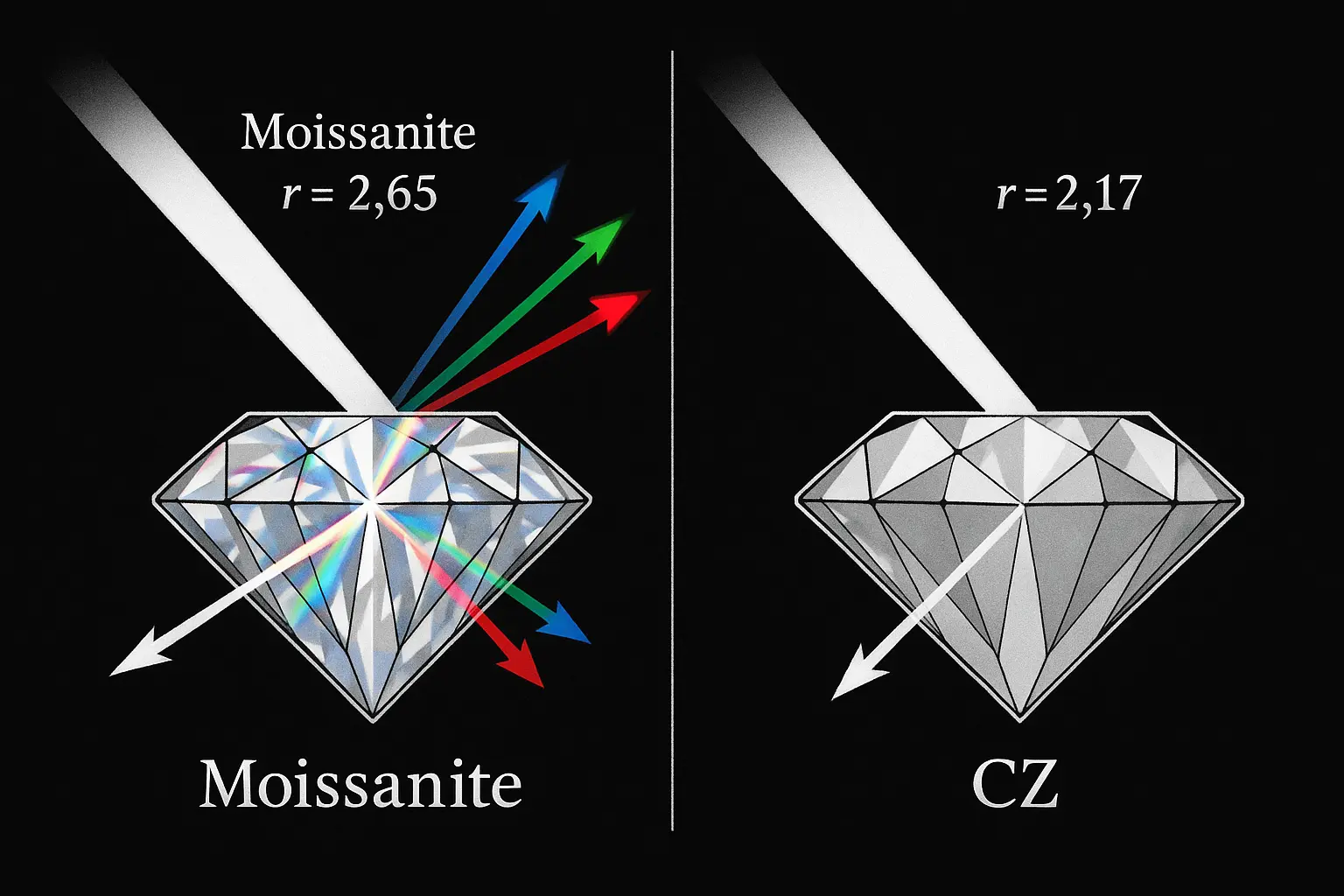
Price Analysis: Getting the Best Value
The price difference between these materials is substantial and reflects their different market positions. Cubic zirconia is extremely affordable, typically costing just a few dollars per carat regardless of size. This makes it accessible for fashion jewelry, costume pieces, and situations where the risk of loss is a concern.
Moissanite commands higher prices due to its superior properties and more complex manufacturing process. While still significantly less expensive than diamonds, moissanite represents a middle-ground investment that balances cost with long-term durability and beauty.
From a value retention perspective, moissanite maintains its worth better than CZ. While neither stone appreciates like precious gemstones, moissanite’s durability means you’re less likely to need replacements over time.
Practical Applications: When to Choose Each Stone
For engagement rings and wedding jewelry, moissanite typically emerges as the clear winner. Its durability makes it suitable for pieces that will be worn daily for decades. The stone can withstand the wear patterns of everyday life while maintaining its beauty, making it a practical choice for symbolic jewelry.
Moissanite also works exceptionally well in heritage pieces and family jewelry that will be passed down through generations. Its longevity ensures that the emotional and monetary investment remains intact over time.
Cubic zirconia excels in fashion jewelry applications where trends change frequently. Its affordability makes it practical for seasonal pieces, statement jewelry, and experimental designs. Many jewelry enthusiasts use CZ stones to test new styles before investing in more expensive options.
In the hip hop jewelry market, both stones have their place. CZ provides the flash and affordability needed for bold, trendy pieces, while moissanite offers the durability required for frequently worn chains and pendants.
Care and Maintenance Requirements
Both stones are relatively easy to maintain, but their different properties require slightly different approaches. Moissanite can be cleaned with standard jewelry cleaning methods including ultrasonic cleaners, steam cleaning, and simple soap and water solutions. Its hardness means you don’t need to be overly cautious during cleaning.
Cubic zirconia requires gentler handling due to its softer nature. While it can be cleaned with soap and water, avoid harsh chemicals and ultrasonic cleaners that might cause surface damage. A soft brush and mild cleaning solution work best for maintaining CZ’s appearance.
Both stones should be stored separately from harder gemstones to prevent scratching, though this is more critical for cubic zirconia than moissanite.
Making Your Decision: A Practical Framework
Choosing between cubic zirconia and moissanite ultimately depends on your priorities, budget, and intended use. Consider these key questions:
For long-term wear and sentimental pieces, moissanite’s durability and beauty retention make it the superior choice. The initial investment pays dividends through years of consistent performance.
For fashion jewelry and trend pieces, cubic zirconia’s affordability and perfect appearance make it ideal. You can achieve stunning looks without significant financial commitment.
For mixed collections, many jewelry enthusiasts use both stones strategically – moissanite for important pieces and CZ for experimental or seasonal jewelry.

Expert Insights from Professional Experience
After years of working with both materials in jewelry manufacturing, several practical considerations often surprise customers. Moissanite’s fire can appear different under various lighting conditions, sometimes looking more dramatic than expected. This isn’t a flaw – it’s simply the stone’s natural optical behavior.
Cubic zirconia’s perfect clarity and color can sometimes appear “too perfect” compared to natural gemstones. This characteristic makes it excellent for certain applications while potentially looking artificial in others.
Setting considerations also matter. Both stones can be set using traditional jewelry techniques, but their different hardness levels may affect setting security over time. Professional jewelers understand these nuances and can recommend appropriate settings for each material.
Quality Indicators and Certifications
When purchasing moissanite, look for stones that come with certification from recognized laboratories. Established manufacturers often provide GRA (Gemological Research Associates) certificates that verify the stone’s characteristics and authenticity.
For cubic zirconia, certification is less common due to the material’s standardized nature. Instead, focus on the manufacturer’s reputation and quality consistency. Well-manufactured CZ should be completely clear, properly cut, and free from surface defects.
Addressing Common Questions
Can you tell the difference between these stones and diamonds? To trained eyes, yes – but casual observers often cannot distinguish between high-quality simulants and natural diamonds. Each stone has subtle characteristics that become apparent with experience.
Which stone looks more natural? This depends on personal preference and the specific application. Moissanite’s fire can appear more dramatic than typical diamonds, while CZ’s perfection sometimes looks artificial. Both can be beautiful when chosen appropriately.
Are there sizing and repair considerations? Both stones can be reset and resized like other gemstones, though moissanite’s hardness makes it slightly easier to work with during jewelry repairs.
The Ethical Advantage
Both cubic zirconia and moissanite offer clear ethical advantages over mined diamonds. As lab-created materials, they avoid the environmental and social concerns associated with diamond mining. This appeals to consumers who want beautiful jewelry while maintaining ethical purchasing standards.
The transparent supply chain for both materials means you can trace your stone’s origin and production methods, providing peace of mind about your purchase’s impact.
Future Trends and Innovations
The synthetic gemstone market continues evolving with new colors, cuts, and quality improvements regularly introduced. Moissanite now comes in fancy colors including pink, blue, yellow, and green, expanding design possibilities beyond traditional colorless stones.
Cubic zirconia production has also advanced, with improvements in durability coatings and color consistency making it an increasingly attractive option for fashion jewelry applications.
Conclusion and Recommendations
Both cubic zirconia and moissanite serve important roles in today’s jewelry market, but they excel in different applications. Moissanite offers the durability and beauty needed for important jewelry pieces, making it ideal for engagement rings, wedding jewelry, and heirloom pieces. Its superior hardness and optical properties justify the higher cost for long-term investments.
Cubic zirconia provides unmatched affordability and consistent beauty for fashion jewelry, experimental pieces, and situations where frequent replacement is acceptable. Its perfect clarity and colorless appearance make it excellent for contemporary designs and trend-forward pieces.
The best choice depends on your specific needs, budget, and personal preferences. Consider the intended use, wear patterns, and emotional significance of the piece when making your decision.
For those interested in exploring high-quality moissanite options, Minye Jewelry specializes in premium moissanite jewelry with GRA certification, offering both classic and contemporary designs backed by 15 years of manufacturing expertise. Whether you choose moissanite or cubic zirconia, investing in quality craftsmanship and appropriate settings will ensure your jewelry provides years of enjoyment and beauty.



